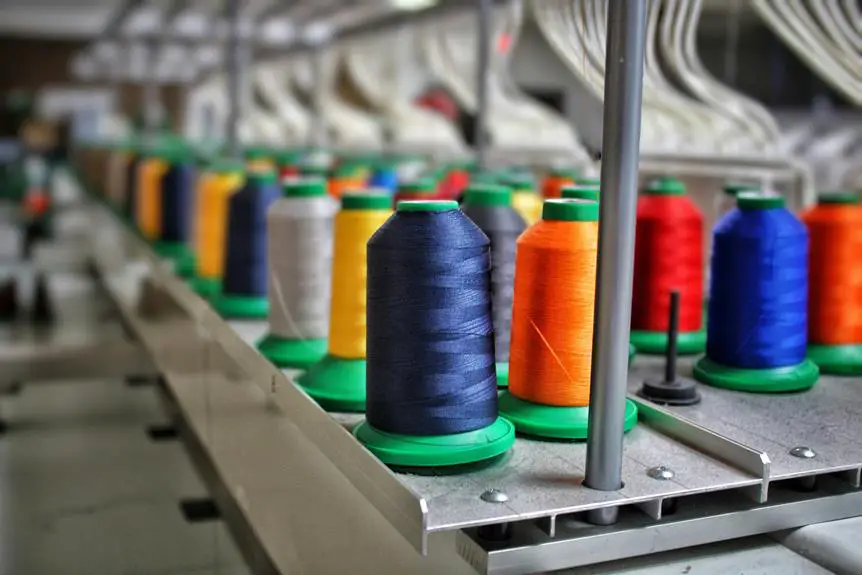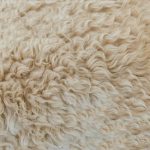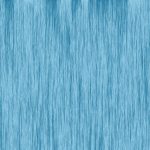When you consider the environmental impacts of Dotted Swiss production, you start to see a complex web of issues that extend well beyond its charming texture. You might think about how sourcing raw materials can either harm or help ecosystems, while water usage can affect local communities and wildlife. Then there's the energy consumption and chemical hazards involved, which veer into troubling territory. As you explore these implications, you'll find surprising patterns and potential solutions that could reshape how Dotted Swiss fabric is made. What might those solutions look like, and could they redefine sustainable textile practices?
Table of Contents
Sourcing Raw Materials
When sourcing raw materials for Dotted Swiss production, it's crucial to prioritize sustainable practices that minimize environmental impact. You need to consider the origins of the cotton or synthetic fibers you choose. Opt for organic cotton whenever possible, as it's grown without harmful pesticides and fertilizers, which protects both ecosystems and soil health.
Additionally, look for suppliers who engage in responsible sourcing. That means they should have certifications like Fair Trade or Global Organic Textile Standard (GOTS). These certifications ensure that your materials aren't only organic but also sourced under fair working conditions.
You'll also want to evaluate the sourcing of any dyes or treatments used in Dotted Swiss. Choosing water-based or low-impact dyes can significantly reduce the toxic footprint of your production process.
Water Usage and Pollution
Sourcing sustainable materials is only part of the equation; managing water usage and minimizing pollution during Dotted Swiss production are just as vital for reducing your environmental footprint.
The textile industry consumes vast amounts of water, and producing Dotted Swiss is no exception. During the manufacturing process, water is essential for dyeing and finishing, which can lead to significant water depletion in the surrounding areas.
Additionally, the wastewater generated can contain harmful chemicals that, if not treated properly, can pollute local water sources. You need to ensure that manufacturers utilize efficient water management systems and invest in proper wastewater treatment facilities.
This will help mitigate negative impacts on local ecosystems and contribute to cleaner water sources.
Energy Consumption in Production
Energy consumption during Dotted Swiss production plays a crucial role in shaping its overall environmental impact. You might be surprised to learn just how much energy-intensive processes are involved in creating this delicate fabric. From spinning the yarn to weaving the intricate patterns, each step consumes significant energy, mainly sourced from fossil fuels. This reliance on non-renewable energy contributes to greenhouse gas emissions, exacerbating climate change.
As you consider the broader implications, think about the energy efficiency of production methods. Some manufacturers are adopting newer technologies to reduce energy use, but not all are on board. When choosing where to source your Dotted Swiss fabric, you can look for companies committed to sustainable practices, including energy-efficient production.
Additionally, local production can lower transportation energy costs, further reducing the overall carbon footprint. As an informed consumer, you have the power to support brands that prioritize reduced energy consumption. By being mindful of your choices, you can help drive demand for more sustainable energy practices in the textile industry.
Ultimately, every piece of fabric can carry an environmental weight, so consider the energy behind the creation of Dotted Swiss.
Chemical Use and Toxicity
Chemical use in Dotted Swiss production has significant implications for both environmental health and consumer safety. During the manufacturing process, various chemicals are commonly employed, such as dyes, bleaches, and finishing agents. While these substances enhance the fabric's look and feel, they often pose severe risks to ecosystems and personal health.
Many dyes contain toxic components that can leach into water supplies, harming aquatic life and potentially entering the food chain. Exposure to these chemicals isn't just an environmental concern; it can also affect you as a consumer. Prolonged contact with fabrics treated with toxic substances may lead to skin irritation, allergies, or even more serious health issues over time.
Furthermore, the methods used to dispose of or treat these chemicals can create additional environmental hazards. If not managed properly, chemical runoff can contaminate soil and water sources, leading to long-term ecological damage.
Therefore, it's crucial for both manufacturers and consumers to prioritize sustainable practices, ensuring the use of safer alternatives and responsible chemical management in Dotted Swiss production. By doing so, you contribute to a healthier planet and a safer textile industry for everyone.
Waste Generation
When you look at the waste generated in Dotted Swiss production, you'll notice several key areas of concern.
You've got byproducts from the manufacturing process, along with the packaging waste that often gets overlooked.
Plus, the fabric's end-of-life disposal raises important environmental questions you can't ignore.
Manufacturing Process Byproducts
The manufacturing process of Dotted Swiss fabric generates various byproducts that pose challenges for waste management and environmental sustainability. During the weaving and finishing stages, you'll find remnants of fabric, excess threads, and lint, all contributing to waste accumulation. Many of these materials end up in landfills, where they take years to decompose, further exacerbating the waste crisis.
Additionally, the dyes and chemicals used in the finishing process can create hazardous liquid waste. If not treated properly, these byproducts can contaminate soil and water systems, posing risks to local ecosystems. In your efforts to mitigate these impacts, implementing better waste management practices becomes crucial.
Recycling initiatives can also play a role in reducing byproduct waste. By reclaiming materials, you can decrease the overall environmental footprint of the production process. Similarly, developing biodegradable alternatives for chemical treatments may help lessen the amount of harmful byproducts generated.
Staying informed about these issues and advocating for sustainable practices can make a significant difference in how Dotted Swiss fabric impacts the environment. Remember, every step you take towards responsible manufacturing is a step toward a healthier planet.
Packaging Waste Concerns
Packaging materials used in Dotted Swiss production often contribute significantly to waste generation, highlighting a critical area for improvement in sustainability efforts.
As consumers, you may not realize how much waste is created by the packaging of these fabrics. From excess plastic wraps to cardboard boxes, these materials often end up in landfills, contributing to the growing waste crisis.
To make a difference, consider the following:
- Minimize packaging: Support brands that use minimal packaging or eco-friendly alternatives.
- Recyclability: Look for packaging that's easily recyclable, ensuring it doesn't end up in the waste stream.
End-of-Life Fabric Disposal
End-of-life fabric disposal poses significant challenges, as many Dotted Swiss materials often end up in landfills instead of being recycled or repurposed. This trend contributes to the growing textile waste crisis, where synthetic fibers like polyester used in Dotted Swiss aren't biodegradable. When you discard these fabrics, they can take hundreds of years to decompose, leaching harmful chemicals into the soil and water.
You mightn't think about it, but your choices significantly impact the environment. Instead of tossing your worn-out Dotted Swiss, consider donating or upcycling it. Many organizations accept fabric donations, and creating DIY projects can give these materials a second life.
Alternatively, some recycling facilities do accept textiles, though it's important to check if they specifically handle the synthetic blends commonly found in Dotted Swiss.
Transportation Emissions
Transportation emissions play a crucial role in the environmental impact of Dotted Swiss production, as the journey from farm to store significantly contributes to greenhouse gas release. When you think about the processes involved, it's essential to recognize that every mile traveled by trucks, ships, or planes adds to the carbon footprint of this fabric. The longer the distance, the greater the emissions.
Consider the implications involved in this transportation. You might find that:
- The energy consumed during transit often comes from fossil fuels.
- Packaging materials used in transport can also create waste, compounding the environmental burden.
As a result, you should be aware that every aspect of transportation impacts not only the final product's cost but also its ecological footprint.
By understanding this connection, you can better appreciate the importance of local sourcing and efficient distribution methods in mitigating these emissions.
Recognizing the environmental impacts associated with transportation allows you to make more informed decisions when choosing Dotted Swiss fabrics in the future.
Sustainable Alternatives and Solutions
Considering the environmental challenges posed by traditional Dotted Swiss production, it's vital to explore sustainable alternatives that can significantly reduce its ecological impact. One promising approach is adopting organic cotton or Tencel materials. These fabrics not only minimize pesticide use but also require less water, making them less harmful to the environment.
You can also consider sourcing from local producers. This practice reduces transportation emissions, allowing you to support local economies while cutting down on your carbon footprint. Implementing eco-friendly dyeing processes can further lower pollution levels associated with production.
Incorporating a circular economy model is another effective solution. This means designing garments that can be easily recycled or upcycled, prolonging their lifecycle and reducing waste. Encouraging practices like clothing swaps or recycling programs within your community can foster a culture of sustainability.
Lastly, educating consumers about sustainable fashion choices and the importance of ethical production can drive demand for greener practices in the industry. By prioritizing these alternatives, you can contribute to a more sustainable future for Dotted Swiss and the environment as a whole. Embrace these changes, and you'll be part of the solution!
Frequently Asked Questions
What Is Dotted Swiss Fabric Made From?
Dotted Swiss fabric's typically made from cotton or polyester. You'll find it lightweight and airy, featuring small raised dots, which give it a distinctive texture. It's perfect for dresses, curtains, and other delicate garments.
Who Are the Leading Producers of Dotted Swiss Textiles?
You'll find that leading producers of dotted Swiss textiles include manufacturers in Italy, Switzerland, and France. These countries excel in producing high-quality fabrics, maintaining traditional techniques while adapting to modern trends in textile production.
How Does Dotted Swiss Compare to Other Fabrics Environmentally?
When comparing fabrics, you'll find dotted swiss can have a lighter environmental footprint than some alternatives, depending on production methods. It's essential to consider sourcing, processing, and lifecycle effects when making your choices.
What Are the Social Impacts of Dotted Swiss Production?
You'll find that dotted Swiss production affects communities through job creation and economic opportunities. However, it can also lead to labor exploitation and unequal pay, impacting workers' rights and overall social welfare in production regions.
Are There Certifications for Eco-Friendly Dotted Swiss?
Yes, there are certifications for eco-friendly Dotted Swiss. Look for labels like GOTS or OEKO-TEX, which ensure sustainable production practices. These certifications indicate the material's environmental impact and help you make informed purchasing decisions.
- How Does Ring Spun Cotton Affect Garment Fit and Shape Retention? - August 13, 2024
- What Are the Challenges in Producing Ring Spun Cotton? - August 13, 2024
- Is Ring Spun Cotton Suitable for Plus-Size Clothing? - August 13, 2024







